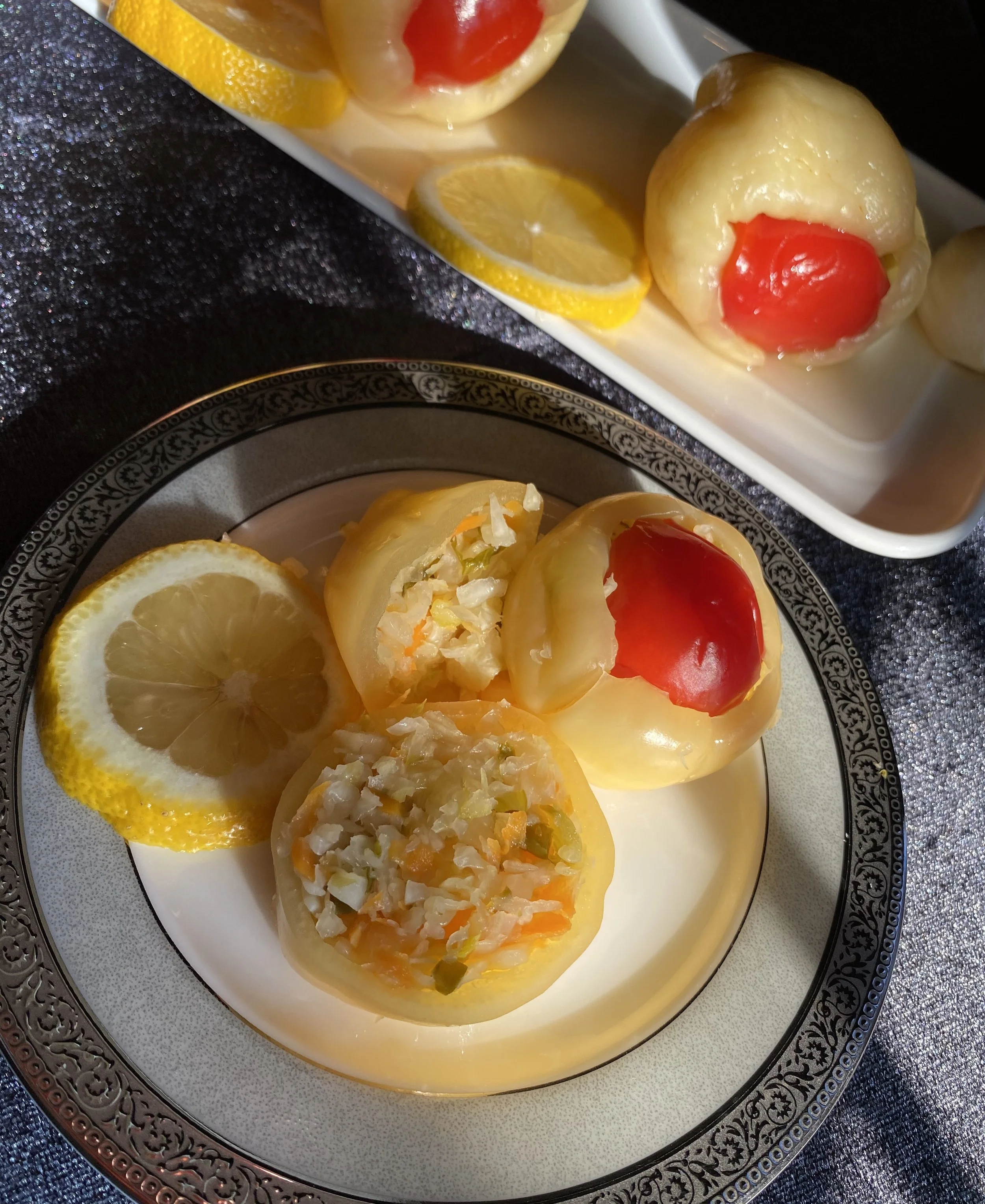Sour Gherkin Pickle / Cornichon / Salatalık Turşusu
Story of traditional Pickles
Pickles are an integral part of winter meals in Turkish cuisine, and cucumber pickle is my favorite fermented side dish! It has a crunchy texture and a wonderful sour, salty, and refreshing taste!
Traditionally, crunchiness is very important for a good pickle. Using grandma’s traditional technique, my cornichon pickles have passed the test for last several years. Now, I am sharing this secret and whole process with you to inspire you to prepare tasty, healthy, and fermented pickles without additives or preservatives.
Believe me, having sour and crunchy pickled cucumbers available throughout the winter is something special!…They are addictive!
Sour Gherkin Pickle / Kornişon Turşusu: Traditional Method for Crunchy Pickled Cucumbers
Note: By clicking on the video, you allow third parties (YouTube and Google) to access your data. Visit our privacy policy for more info.
Ingredients
For the pickle:
1 kg baby gherkin (cucumbers)
1 large carrot
8-10 garlic cloves
10-15 raw chickpeas
1 lemon
2 celery stalks (or dill stems)
8 tbsp vinegar
2 tsp sugar
1-2 jalapeno pepper (optional for spice lovers)
2 jars (750 ml each) with fitted lids
For the brine
1 L drinking water
¼ cup pickling salt
½ tbsp lemon salt (citric acid) or the juice of 1 lemon
Notes from the Kitchen
Never use waxed cucumbers as the wax prevents salt penetration.
Salt treatment makes the pickles crunchier. Please follow the directions for crunchy pickles.
You can air dry the remaining pickling salt and store it for later use.
Pickling garlic shouldn’t have scar on its skin. Don’t use a knife for skinning them. Submerge the garlic cloves in a bowl of warm water to loosen the hard skins and be able to skin them easily.
Serving rules:
Fermented foods are spoil if they are contaminated!
Once you open a pickle jar, keep it in the fridge.
Do not touch the contents with your hands, use a clean utensils instead. This practice keeps your pickles fresh for longer.
After taking the desired amount, cover the contents again with the lemon slices and celery before closing the lid.
If necessary, add some water / brine to the jar to cover any exposed vegetables.
Directions
CLEANING THE VEGETABLES
Submerge the cucumbers in a large container of water with 1 tbsp of vinegar for 10-15 minutes. This helps to clean all the dirt and unwanted bacteria from the vegetables. Then, wash each cucumber under running water and drain the excess water. Set aside.
Separate the celery stalks and thoroughly wash them. We will use their thinner and leafy parts. Drain the excess water and set aside.
SALT TREATMENT
In a large container, cover the cucumbers with pickling salt in layers. Layering allows for better penetration.
Leave the cucumbers in the salt for 5-7 minutes. Then, scrape off the salt and wash the cucumbers.
Using a long needle, puncture each cucumber on both ends. This allows the cucumber to easily absorb the brine, necessary for a better fermentation process.
Use the remaining pickling salt for the carrot slices.
Now, the vegetables are ready for pickling.
BRINE & FLAVOUR AGENTS
Prepare enough brine using this ratio:
1 L water to 1/4 cup pickling salt to 1/2 tbsp lemon salt (citric acid). Boil the water for 3-5 minutes. Then, dissolve the dry ingredients and set aside to cool down to room temperature.
Wash and slice the lemon.
Wash the garlic cloves, submerge them in warm water for 10-15 minutes, and peel them without damaging their flesh. Set aside.
THE ASSEMBLY
Pour 1-2 tbsp of vinegar into the pickling jar.
Add half of the raw chickpeas. They will improve the long-term natural fermentation process.
Add 2-3 garlic cloves.
Then, arrange the cucumbers as tightly as possible in the jar.
Halfway up the jar, place the carrot slices and continue with the cucumbers until the jar is full. Carrot slices are added for their bright colour, sweet taste, and softer texture.
Place a couple of garlic cloves in any remaining crevices.
Then, cover the cucumbers with the lemon slices and a leafy celery stalk.
Pour 2 tbsp of vinegar and 2 tsp of sugar over the contents.
Then fill the jar with the brine.
Place 1 more lemon slice on top. Cover the jar with a fitted lid.
Place the pickle jars in a dark and cool place to slow down the fermentation.
FIRST FERMENTATION
For the first 7-10 days, fermentation will be very fast. Some of the brine will spill out during this short-term fermentation process. So, place the jars in an old tray for easy cleaning and keep an eye on them.
Having empty spots in your pickle jars may allow unwanted bacteria and mold to develop, so try to arrange the ingredients well to avoid gaps.
By the end of the short-term fermentation (bubbling and spilling out the brine will slow down and stop completely), you should refill the jars with the remaining brine so the contents are not exposed to air. This is an essential step before leaving the pickles for long-term storage.
LONG TERM FERMENTATION
Store your pickles in a dark and cool pantry. In such conditions, your pickles will be ready within 25-30 days, and they will remain fresh for at least a year. Enjoy the last warm days of the summer while waiting for your pickles to mature.
SERVING
Traditionally, pickles (probiotics) are mostly eaten with legumes (prebiotic) to improve digestion. However, cucumber pickles also go perfectly with meat dishes, sandwiches, salads, or on their own, as is!
















